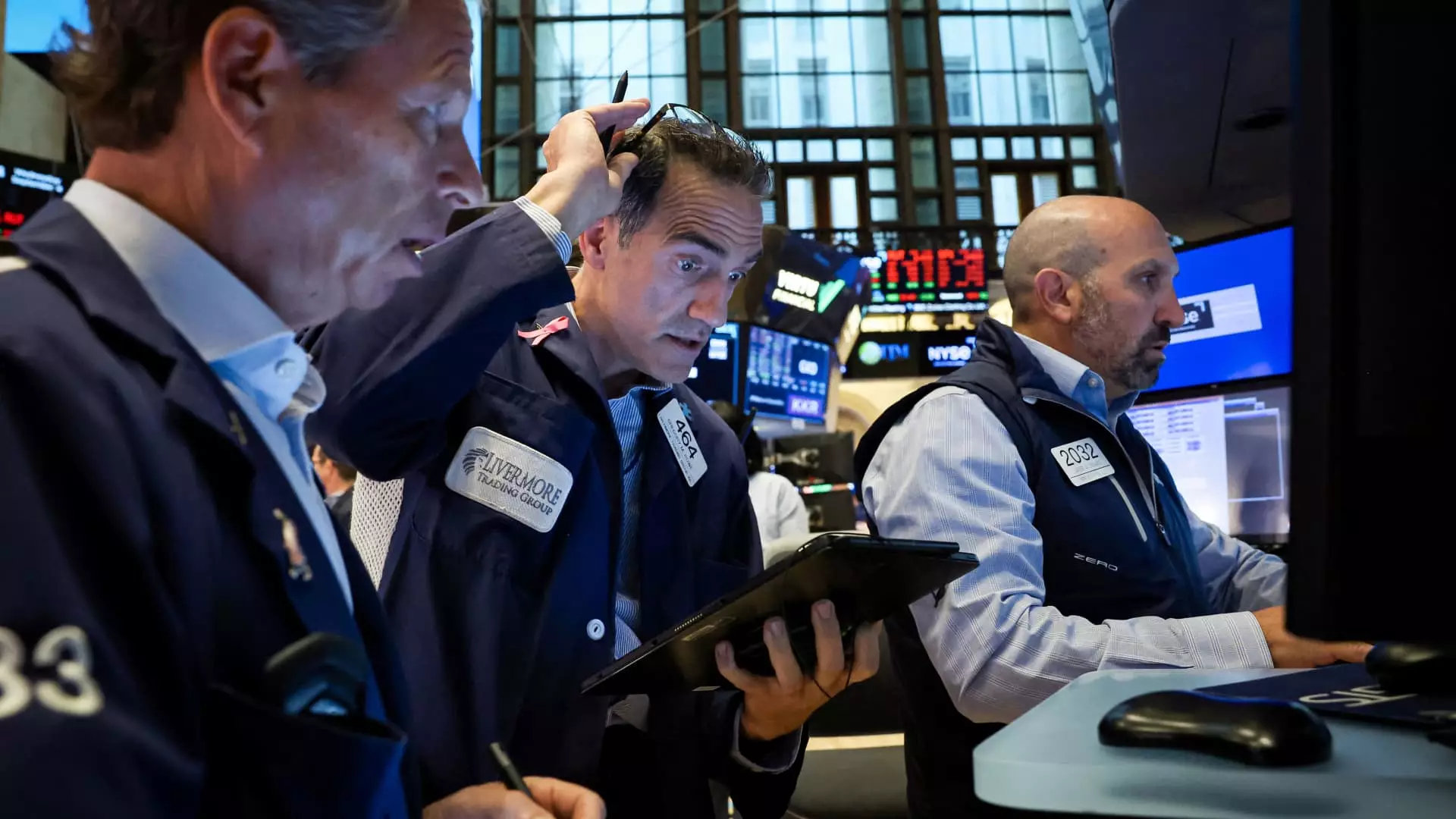The stock market has always been a realm of unpredictability, particularly evident since the Club’s meeting in August. Recent trends highlight the ebbs and flows of major indices, with the S&P 500 rising by 1.8%, while the Dow Jones Industrial Average and Nasdaq Composite increased by 2.1% and 0.9%, respectively. However, this summary belies the underlying tension in the market environment, marked by significant investor anxiety regarding the sustainability of the generative artificial intelligence (AI) surge and an intense scrutiny of the Federal Reserve’s forthcoming decisions on monetary policy.
This overarching uncertainty has resulted in erratic market behavior, demonstrated by the S&P 500 experiencing its worst week since March 2023. A disappointing jobs report for August coupled with sharp declines in key stocks, such as Nvidia, contributed to this volatility. Despite Nvidia’s later recovery erasing some losses, the pattern emerging from such fluctuations signals caution among investors. September’s performance has been rocky, standing in stark contrast to the four consecutive months of gains the S&P 500 enjoyed prior to this onset of turbulence.
In light of this uncertain climate, our investment strategy has evolved. The recent market volatility has offered us opportunities to rebalance our portfolio by trimming positions in prominent stocks such as Eli Lilly, Procter & Gamble, and exiting our stake in Estee Lauder entirely. The proceeds from these sales were reallocated to strengthen our holdings in companies positioned to benefit from the AI boom, like Dover, and invest in clean energy initiatives through Nextracker. Notably, on September 4, we initiated a position in Home Depot, indicating a shift towards retail sectors viewed as stable in potential economic downturns.
Investors presently exhibit a proclivity for defensive stocks, gravitating towards well-capitalized companies likely to weather a looming recession. Noteworthy examples include Abbott Laboratories and TJX Companies, which emerged as our top performers since the Club’s August Meeting. Their ability to provide resilience in tumultuous times underscores a broader strategy among investors to seek refuge in established companies with strong fundamentals.
Examining individual stock performances provides insight into this period of volatility. Best Buy, for instance, has surged by 17.7%, catalyzed by Fed Chair Jerome Powell’s dovish remarks at the Jackson Hole Economic Symposium. Lower interest rates tend to stimulate housing activity, which in turn boosts demand for Best Buy’s electronics and appliances. The company’s robust earnings report on August 29 further solidified investor confidence, leading to a notable increase in stock value despite some subsequent backtracking.
Amazon, another key player, recorded a solid 8.5% rise. Its recovery reflects positive endorsements from Wall Street, emphasizing its resilience against shifting consumer spending trends. As economic uncertainties loom, Amazon’s strategy to attract budget-conscious consumers positions it as a formidable competitor. This sentiment was echoed after an investor day marked by optimistic projections for its cloud services segment.
TJX Companies, known for its discount retail model, also fared positively, with an 8% uptick. The company raised its profit forecast amid a solid earnings report, reflecting a market trend favoring recession-proof stocks. As consumer spending habits evolve, budget retailers like TJX are likely to capture more market interest.
Advanced Micro Devices (AMD) illustrated market fluctuations through its 6.5% increase, fueled by surging interest in AI technologies. Despite earlier struggles, AMD’s recovery correlates with broader industry optimism as chip demand rebounds, underscoring the cyclical nature of tech stocks.
Lastly, Abbott Laboratories saw a 6.1% rise, motivated by a marked rotation of funds into defensive sectors such as healthcare. Analysts attribute some of Abbott’s recent success to its introduction of a new continuous glucose monitor, which potentially solidifies its market position amidst increasing health awareness.
The recent stock market fluctuations underscore the complex interplay of investor sentiment and external economic indicators. As we move forward, it is imperative to continue evaluating our portfolio through the lens of this volatility, strategically reallocating resources to capitalize on emerging opportunities while minimizing exposure to potential pitfalls. The emphasis on investing in sectors with robust fundamentals, such as healthcare and discount retail, will likely serve us well in the uncertain months ahead. As always, vigilance and adaptability in our investment approach remain paramount in navigating this intricate financial landscape.

